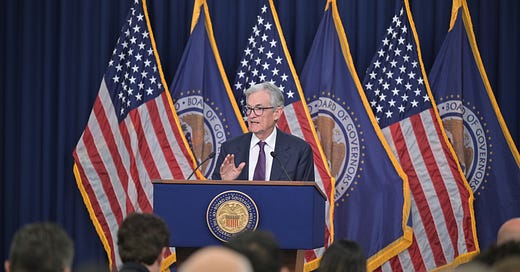The Federal Reserve vs. The White House
History’s lesson: From Weimar to Türkiye, undermining central banks ends in disaster. Is the U.S. next?
The Federal Reserve was established in 1913 as a response to the financial panics that had plagued the U.S. economy, most notably the crisis of 1907. Its structure—a blend of public oversight and regional private banks—reflected a compromise between those who feared centralized power and those who recognized the need for a lender of last resort. While initially focused on financial stability, the Fed’s role expanded over time, particularly after the Great Depression, as policymakers entrusted it with broader macroeconomic management.
Milton Friedman’s critique of the Fed, articulated most forcefully in A Monetary History of the United States (1963), argued that discretionary monetary policy had often done more harm than good. He contended that the Fed’s failure to prevent the money supply from collapsing in the early 1930s exacerbated the Great Depression, and that its attempts at fine-tuning the economy in later decades contributed to inflation. Friedman’s solution—a rules-based approach, such as steady growth in the money supply—gained influence in the 1970s as stagflation appeared to validate his skepticism of central bank discretion.
The case for central bank independence is formalized in the Barro-Gordon model (1983), which demonstrates why discretionary policy leads to inflationary bias when governments prioritize short-term output gains over long-term stability.
The Barro-Gordon Model
Governments love booming economies—it helps them win elections. But if they could just print money to create jobs, they would.
Let’s look at the economy’s structure, beginning with the expectations-augmented Phillips curve:
pi is the actual inflation at time t, E_{t-1} pi_t is the inflation expected for time t at time t-1, y_t is the actual output and y^n the natural rate of output (potential output). y_t minus y^n is also called the output gap. alpha is the sensitivity of inflation to output gaps. The PC describes the trade-off between inflation and output gap.
If the government secretly inflates, i.e. the actual inflation is larger than the expected inflation, then the output gets a short-term boost:
The government wants high output but hates inflation. Its loss function is:
where y-star is the desired output level which is typically bigger than the natural output, reflecting political pressures. beta captures the relative weight on inflation stabilization.
This is where we get to the time-inconsistency problem:
People set expectations first.
Government sets inflation after.
If people are naïve, they believe that the expected inflation is zero. The government cheats; it sets
But people aren’t stupid. They anticipate cheating and set their expectations:
The result is no output gained, since the actual output is still at natural level, but permanent inflation.
The solution? Central bank independence!
If the central bank commits to a rule, like pi = 0, expectations anchor and people expect that inflation. No inflation bias, no wasted stimulus.
Or in plain English:
Politicians want to juice the economy before elections.
People know this, so they demand higher wages/prices in advance.
Outcome: No real growth, just inflation.
Fix: Take the printing press away from politicians!
Türkiye’s Erdoğan slashed interest rates against economists’ advice—triggering 85% inflation and a currency crash. Weimar Germany printed money to pay workers—soon, cash was worthless. Argentina’s endless money-printing led to 211% inflation and repeated defaults.
Hyperinflation in the Weimar Republic: One gold mark in paper marks, values on logarithmic scale.
The pattern? Governments always abuse monetary policy for short-term gain. The Fed’s independence was designed to prevent this—but when Nixon pressured the central bank in 1972, U.S. inflation spiraled to 13%. Now Trump demands rate cuts while plotting to replace the Fed chair, repeating history’s oldest monetary mistake.
When leaders treat central banks as political tools, economies burn. The only question is “who gets burned next?”




